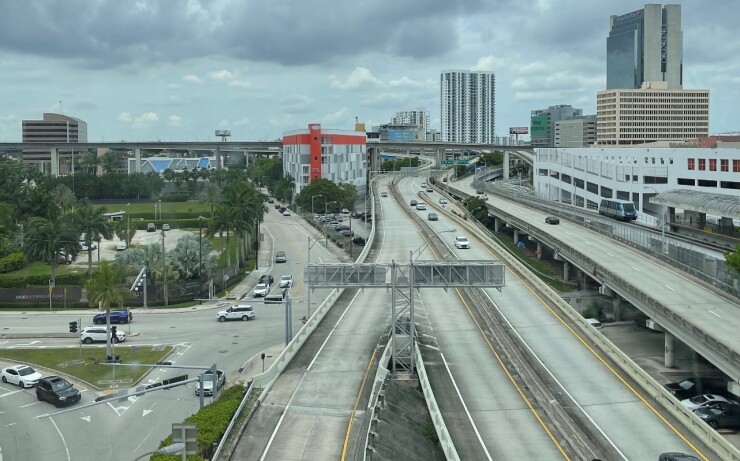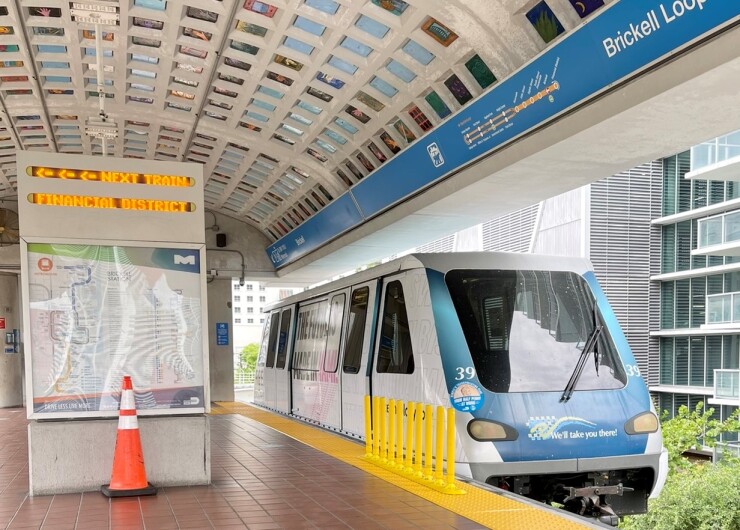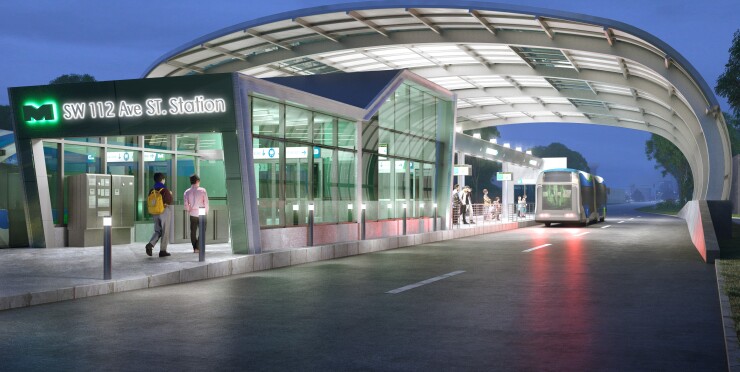Moving around Miami quickly has always been somewhat problematic, but that may be changing if Miami-Dade County can move ahead with plans to beef up the public transportation system in south Florida.
Last week, the county’s Department of Transportation and Public Works officially broke ground for the all-new South Corridor Rapid Transit bus project.
The South Corridor project is one of the six

“Today is the result of years of planning, vision, and coordination with a shared goal in mind: to reshape transportation in Miami-Dade County,” County Mayor Daniella Levine Cava said at the June 4 ceremony. “Breaking ground on the South Dade Rapid Transit Project — the first SMART plan corridor — is a major milestone and a step forward in our work to better connect all corners of Miami-Dade.”
Miami-Dade Transit is the main public transit authority in the city and the county. It operates the Metrorail rail transit, the automated Metromover people mover in downtown Miami, and the Metrobus bus system. Paratransit services are run by a private company.
Metrorail is a 25-mile system composed of two rail lines with stations that connect the city center to neighborhoods north and south of the downtown area and to Miami International Airport. Metromover, a free service, operates throughout the downtown, Omni and Brickell neighborhoods and is composed of three rail loops. Metrobus operates 99 routes, including the South Dade Transitway, and has more than 800 buses.
The SMART plan aims to create six rapid transit corridors by adding more than 70 miles of rapid transit network that will link local and regional centers.
The South Corridor project will create 20 miles of exclusive transit rights-of-way for bus rapid transit to provide a much faster 60-minute ride from Homestead to downtown Miami. It will include two end-of-line terminals; 14 new state-of-the-art transit stations for express and local routes; and 16 additional stops for the all-stop local route on the South Dade TransitWay.
“This project will provide important transportation relief in the short term, as we continue to push for expansion to rail — and critically, all the BRT stations along the corridor will be convertible to rail,” Cava said.
The aim is to provide high-quality bus service with features that are similar to rail. These include off-board fare collection and level boarding, which are designed to improve capacity, reliability and to provide faster and more efficient service.

Financial support for the South Corridor project and BRT service comes from the Federal Transit Administration, Florida Department of Transportation and the People’s Transportation Plan, a half-cent local sales tax managed by the Citizens’ Independent Transportation Trust.
In late 2020, the Federal Transit Administration awarded a $99.9 million grant to the county for the project. It was the first Federal Capital Investment Grant that Miami-Dade had received since the Metromover extension in 1993 and the South Miami-Dade Busway in 1999.
Additionally, FDOT has committed $100 million to the projects while the county will provide $100 million.
The South Dade Bus Rapid Transit Project is being designed and built by Obrascón Huarte Lain, a Spanish multinational construction and civil engineering company.
The improvements to the system are coming none too early. Miami-Dade County is in need of a more a robust public transport system as leaders predict a wave of businesses
Just this Monday, Miami Mayor Francis Suarez announced the latest addition to the rolls of those companies heading to the Magic City. Blockchain.com, a cryptocurrency exchange platform, said it was moving its headquarters out of New York and into the Sunshine State. Blockchain.com is among the 15 biggest crypto exchanges. It’s expected that over the next 18 months up to 300 jobs with an average annual salary of $110,000 may be created.
The private sector has been getting involved in the transportation arena.
Last December, Brightline, a privately owned passenger train system building out a Miami-Orlando line, offered a $950 million

In 2018, Brightline began operating trains on 75 miles of rails between Miami and West Palm Beach, but halted service in March 2020 citing the COVID-19 pandemic. It hasn't carried any passengers since then, although it is working on resuming service later this year and has been conducting signal and safety tests on runs without passengers.
A key assumption in the company's current financial projections is that service between Miami and West Palm Beach will resume in the third quarter of 2021, with operations stabilizing in 2022, according to the remarketing memorandum on the 2019 bonds.
While service has been suspended, Brightline officials have continued developing additional stations, with the grand opening for 109,000 square for the Orlando Vehicle Maintenance Facility held last month. The private company has also secured government finance to add commuter service out of Miami, and plans added three new stops at Aventura, Boca Raton and PortMiami.
The firm has entered into a shared commuter rail corridor agreement with Miami-Dade County. Brightline expects to securitize its 30-year access fee agreements with Miami-Dade and Broward counties for $625 million, according to the remarketing roadshow.
Not to be left out, the federal government is taking a close, but contentious look, at transportation funding in the United States.
Currently, Congress is debating the future of public transportation ahead of September’s expiration of the FAST (Fixing America's Surface Transportation) Act, which got a one-year extension last year.
Democrats and Republicans in the House have introduced dueling proposals.
House Democrats back their $547 billion INVEST in America (Investing in a New Vision for the Environment and Surface Transportation in America) Act, which includes $109 billion for transit.
House Republicans are behind their $400 billion STARTER (Surface Transportation Advanced through Reform, Technology, & Efficient Review) Act, which includes a 32% increase in highway funding to help the nearly broke Highway Trust Fund but cuts $15 billion of public transit funds.
"Everyone wants the improvements, but the consideration of how to pay for the projects is the contentious issue," said John Hallacy, founder of John Hallacy Consulting LLC. "Will it be user fees or broad-based taxes or some highly negotiated mix. Just saying no to any hikes is not tenable. Given climate change concerns, why do some still want to cut mass transit funding?"
He said the time to act is now.
"The population growth in select locales is accelerating, which means that faster action should be taken," Hallacy said.





